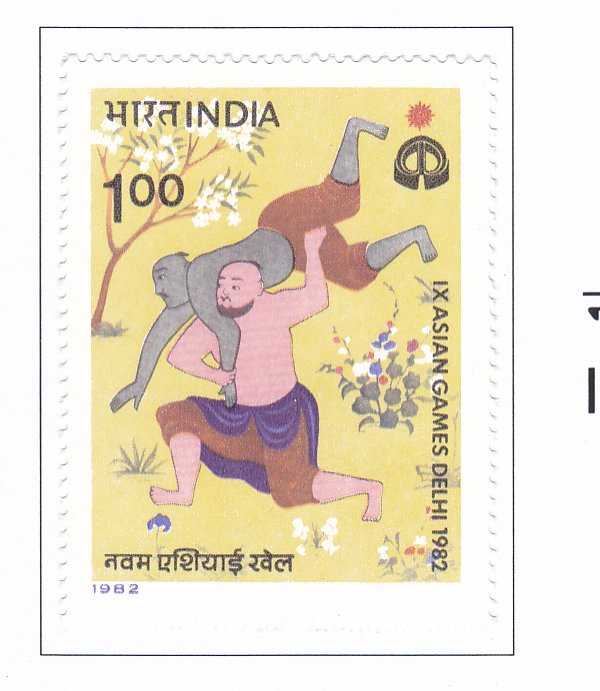Wrestling Bout

Technical Data
| Stamp Set | 9th Asian Games, New Delhi |
|---|---|
| Date of Issue | October 30, 1982 |
| Denomination | Rs. 1 |
| Quantity | 3,000,000 |
| Perforation | comb 13½ x 14 |
| Printer | Security Printing Press, Nashik |
| Watermark | No Watermark |
| Colors | Multicolor |
| Catalog Codes |
Michel IN 922 Stamp Number IN 993 Yvert et Tellier IN 735 Stanley Gibbons IN 1057 |
| Themes | Sports | Wrestling |
The IX Asian Games, held in 1982, promised to be a spectacular event, showcasing India’s advancements in sports and physical education. The construction of new sports facilities and the modernization of existing ones were set to enhance the architectural beauty of India’s capital, New Delhi. This event also provided an opportunity to display the country’s rich cultural heritage.
Wrestling, a sport deeply cherished in India, was a focal point of the Games. Unlike many other sports, wrestling has traditionally required minimal equipment and facilities, relying more on skill and strength. However, modern wrestling has evolved into a globally recognized sport with specific requirements such as a proper wrestling ring, referees, judges, and standardized rules and regulations, including weight categories to ensure fair competition.
In the IX Asian Games, wrestling was categorized into two styles:
- Indian Style: In this style, the objective is for one opponent to pin the other flat on his back.
- Greco-Roman Style: The winning wrestler must keep the loser on his back for a count of ten to be declared the winner.
The wrestling events were held at the Ambedkar Stadium in New Delhi. To commemorate the Games, the Indian Posts and Telegraphs Department issued a special stamp featuring a painting of a wrestling bout. This painting, set against a golden background with flowering trees and plants, exhibits strong Persian influences and is executed in the Mughal style of the early 17th century. The artwork, created by Janaki and preserved in the National Museum in New Delhi, served as the basis for the stamp design by A. Ramachandran. The transparency used for the stamp design was provided courtesy of the National Museum.
